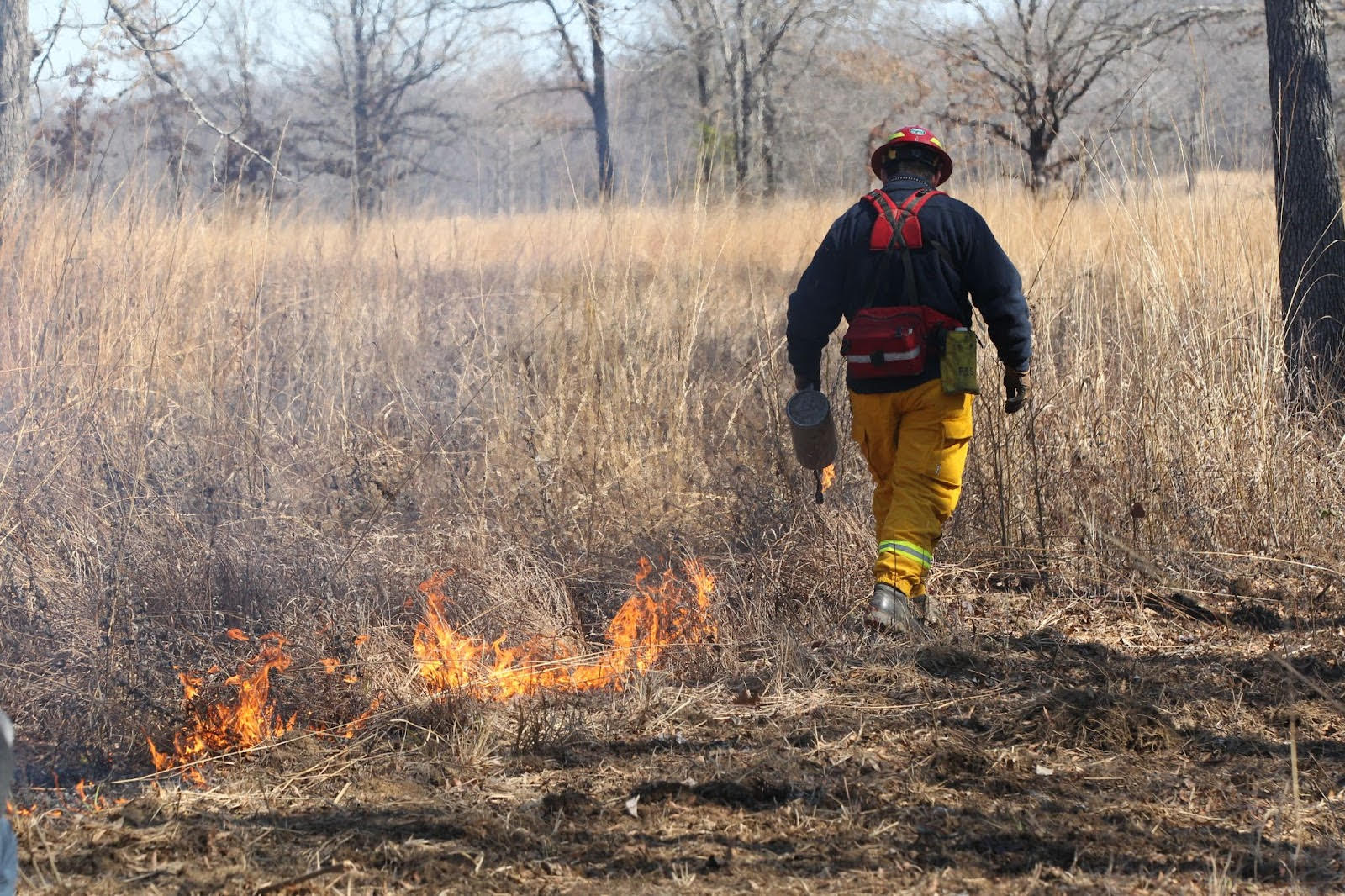Birds of prey popular option for winter wildlife viewing
ON 02-19-2020
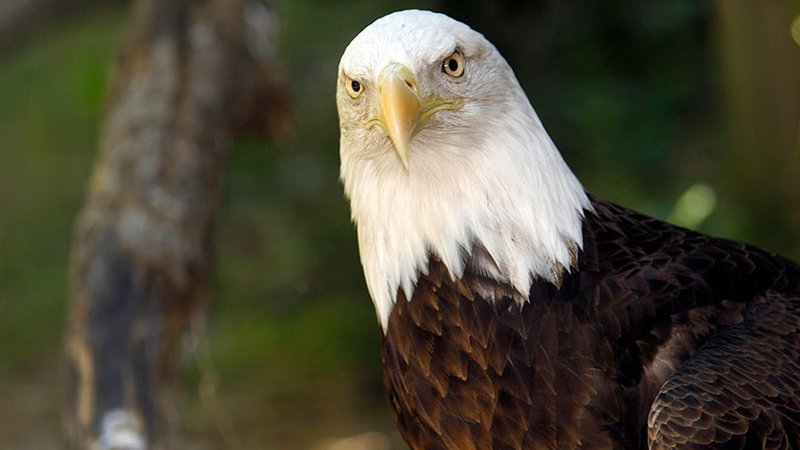
Feb. 19, 2020
Randy Zellers
Assistant Chief of Communications
LITTLE ROCK – Watchable wildlife is typically thought of as a spring and summer endeavor, but there are plenty of reasons to don a coat and get outside during winter as well. Many of the more colorful migratory birds will be making their way back north in the next few months, but birds of prey are the featured attraction right now.
Motorists along Arkansas interstates and other highways often enjoy spotting and identifying hawks and other birds of prey. Some of these birds, like some red-tailed hawks, are year-round Arkansas residents. Others are only seen during late fall, winter and early spring as they follow the ducks and songbirds that make up a portion of their diet. Many red-tailed hawks and other raptors also join their local cousins as they travel south to hunt small rodents in fields and grassy roadsides near interstates.
One of the easiest ways to view birds of prey is to travel the highways and backroads near agricultural land. Croplands can be teeming with smaller mammals and birds after they are harvested, and the open area makes it easy for birds to make use of their excellent vision to pinpoint their next supper. Look at the edges of the fields, where bare hardwoods offer a perch for these large birds to keep a lookout. Red-tailed and Red-shouldered hawks are also well known to sit atop fence posts along these fields when no large trees are present.
Bald eagles, big, majestic and unforgettable birds, are sometimes seen, along with ospreys, chiefly near lakes or rivers. Two species of vulture also are common – turkey vultures with red heads and black vultures with black heads. Contrary to what you may hear, North America has no species of buzzard. Buzzards are found in Europe and Asia, and look quite similar to many species of North American hawks.
If the birds are flying and at a distance, here’s an easy way to separate the vultures from the other birds of prey: Eagles and hawks soar with wings straight out from their bodies. Vultures soar with wings in a V shape.
Hawks and falcons are common and range from small kestrels to the big red-tailed hawk and red-shouldered hawk. Raptors can vary in plumage, but here are some tips to help identify several species of hawks and falcons common in Arkansas in the winter:
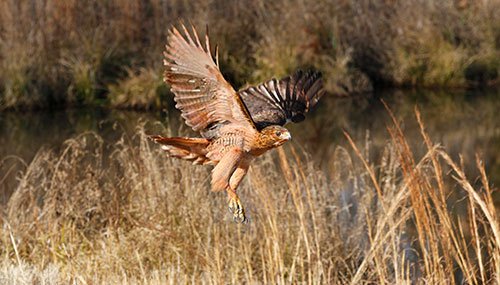
Red-tailed hawk: Large. In flight, look for a rusty-red tail on top with paler red if viewed from underneath. Dark head contrasting with light breast and dark belly band.
Red-shouldered hawk: Medium-large. In flight, look for finely barred reddish underneath and narrow white bands on the dark tail. Reddish shoulder patches are a good identifying mark for adults.
Rough-legged hawk: Large. In flight, look for a white tail with a dark band, pale head contrasting with a darker back and dark belly band. uncommon
Northern harrier or marsh hawk: Medium-large. In flight, look for long, narrow wings held above the horizontal,very distinctive white rump and long tail. Often seen soaring low over harvested crop fields or grasslands.
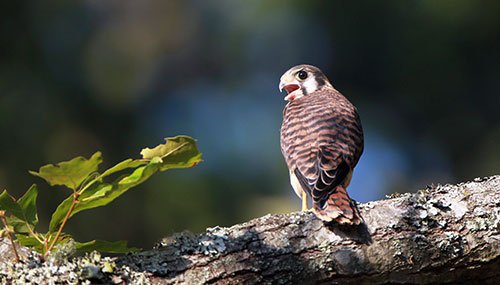
American kestrel: Small, jay sized, frequently sitting on utility wires. Hovers in flight. Look for a rusty back and two whiskers on each side of the face.
Merlin: Small, jay size, with long banded tail, long pointed wings. Brownish slate back with light, streaked under parts. Uncommon in the state.
Sharp-shinned hawk: Small, slightly larger than a jay, fast-flying hawk with long square tail and short rounded wings. Adults are slate gray back, pale underneath with fine rust-colored bars.
Cooper’s hawk: Medium, crow sized, with long rounded tail and short rounded wings. Adults are slate gray above, fine rust bars underneath. Almost identical in appearance but larger than sharp-shinned hawks.
These are general guidelines for bird of prey identification. Keep in mind that the juvenile birds of many species often have different markings and colorations.
Recent News
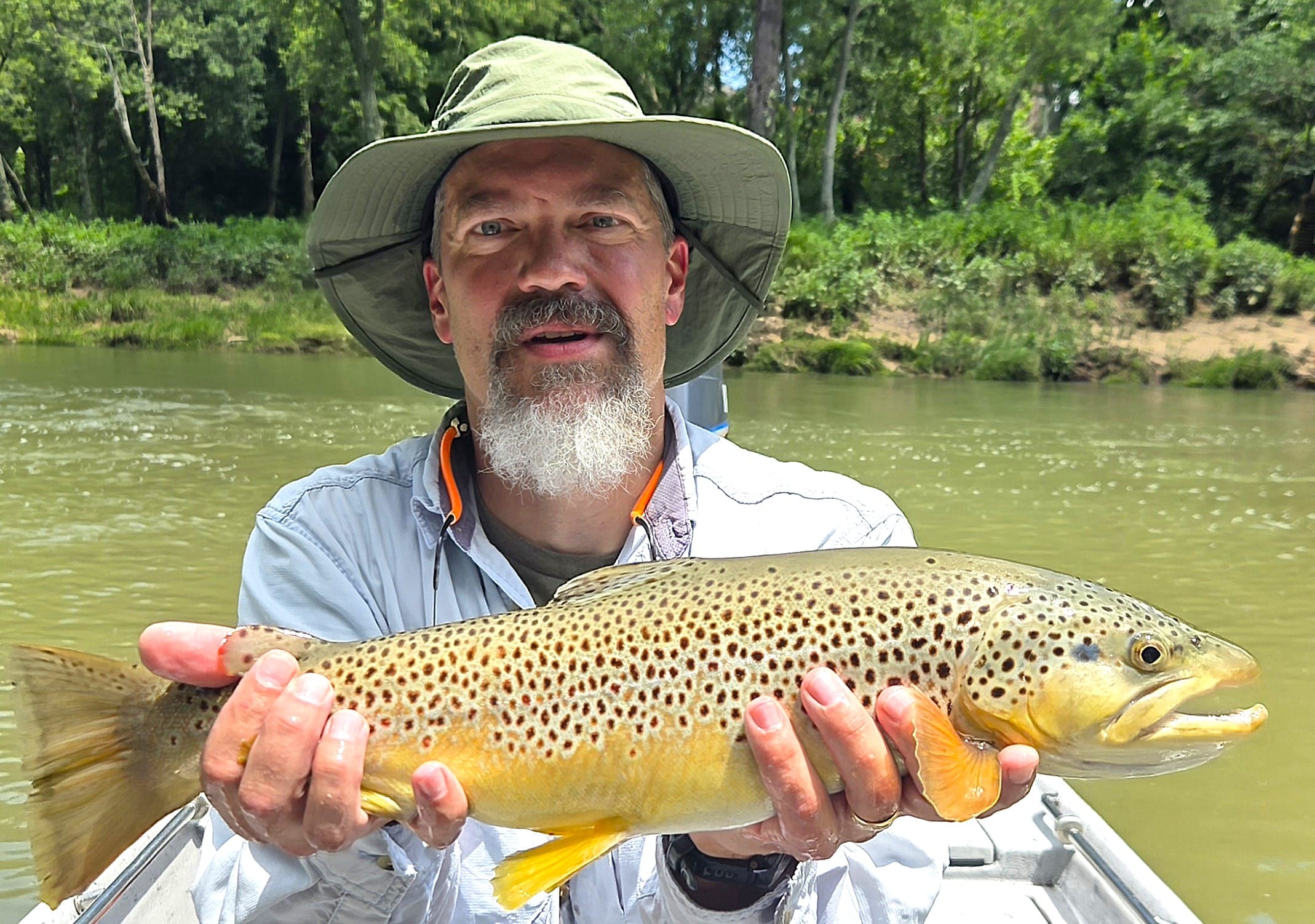
Arkansas Wildlife Weekly Fishing Report
Jul. 3, 2025
Subscribe to Our Weekly Newsletter E-mails
Don’t miss another issue. Sign up now to receive the AGFC Wildlife Weekly Newsletter in your mailbox every Wednesday afternoon (Waterfowl Reports are published weekly during waterfowl season and periodically outside the season). Fishing Reports arrive on Thursdays. Fill in the following fields and hit submit. Thanks, and welcome!

